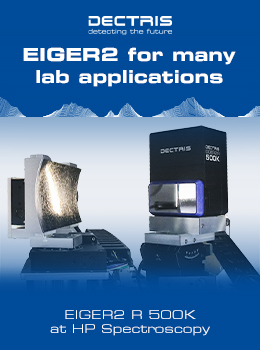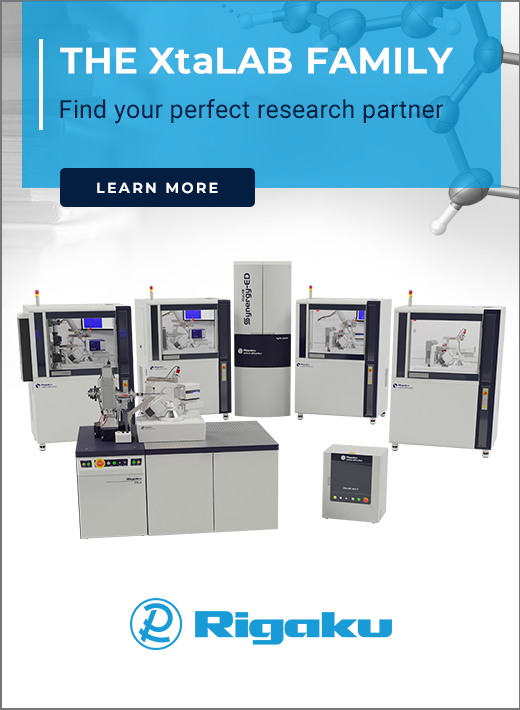
Feature article
A bright future at the Australian Synchrotron
![Thumbnail [Thumbnail]](https://www.iucr.org/__data/assets/image/0005/154391/First-light.png)
Facility Status Monitor showing “First Light” on the Micro-Computed Tomography Beamline (image courtesy of the Australian Synchrotron).
The Australian Synchrotron is classified as one of Australia’s “landmark pieces of scientific infrastructure,” serving over 7000 researchers from around the world but predominantly from Australia, New Zealand and the Asia-Pacific region. The users come from a mix of universities, medical research institutes, government and other research organisations, and industry. This year notably marks 15 years of operation and user access.
The facility has 10 original beamlines in operation, but the current BRIGHT Program1 is investing nearly $AUD 100 million in a near doubling of the number of the beamlines. This includes the construction of eight additional beamlines covering imaging, spectroscopy, microscopy, diffraction and scattering experiments. The aim of this expansion is to meet the needs of Australasian researchers and industry well into the future and to usher in new capabilities and provide access to new experiments needed for breakthrough research.
The BRIGHT Program was initiated in 2016 following on from the commitment of the Australian Commonwealth Government to provide operational funding of the facility for 10 years through to mid-2026. Over the next couple of years, around $AUD 100 million investment was secured under the BRIGHT Program from more than 30 Australian and New Zealand research organisations to cover the construction costs of the eight new beamlines.
Over the last few years, significant planning, extensive consultation with user groups, design, procurement and construction components of the BRIGHT beamlines have been taking place, much of it against a background of the COVID-19 pandemic. Despite these challenges, a significant milestone was achieved in late 2021 with “first light” achieved on the Micro-Computed Tomography (MCT) beamline, as shown in the headline image.
![[Fig. 1]](https://www.iucr.org/__data/assets/image/0006/154392/ADS-and-MCT-Hutches.jpg)
As each beamline has been given approval, the beamline has gained a team responsible for the beamline design, build and future operations, under the stewardship of an experienced Lead Scientist, working in partnership with a Project Manager and a Lead Engineer as part of an integrated project team. These teams are responsible for the individual beamlines and work with the overall Australian Synchrotron BRIGHT Program team.
The planning, design and construction of the new beamlines does not take place in isolation. Existing and potential new users are consulted through fora such as conferences, workshops and user panels. The design of the beamlines is reviewed by beamline scientists at other synchrotron facilities, by the broader in-house team and by the facility’s Scientific Advisory Committees. Moreover, a Beamline Advisory Panel (BAP) is in place for all beamlines, headed by a local scientist of significant international repute who is an expert in the area and involves expert users and beamline scientists from other facilities. Extensive expert review and detailed modelling of the beamline design is conducted well before any construction work and equipment procurements go out to tender.
The final eight new beamlines include Micro-Computed Tomography (MCT), High Performance Macromolecular Crystallography (MX3), Advanced Diffraction and Scattering (ADS-1 and ADS-2), Biological Small Angle X-ray Scattering (BioSAXS), X-ray Fluorescence Nanoprobe (NANO) and Medium Energy X-ray Absorption Spectroscopy (MEX-1 and MEX-2) beamlines, offering a mix of new techniques and capabilities, different accessible energies, and studies of new types of samples in different environments. While the IUCr Newsletter readers will have diverse interests, the rest of this article focuses predominantly on the beamlines in the areas of X-ray absorption, scattering and diffraction.
X-ray absorption spectroscopy
Two of the new suites of beamlines are the Medium Energy X-ray Absorption Spectroscopy (MEX) beamlines (MEX-1 and MEX-2). These will provide X-ray absorption spectroscopy (XAS) capabilities to map the chemistry and element distribution within materials. While the existing wiggler-based XAS beamline at the Australian Synchrotron is designed for heavier metallic elements, the MEX beamlines can target the lighter biologically relevant elements (Si, P, S, Cl, K and Ca) and transition metals with less impact from radiation damage to the samples. MEX-1 and MEX-2 are well-suited to applications in health, agriculture, environmental monitoring, energy and geosciences as well as museum and cultural heritage studies. The MEX beamlines use a bending magnet source, with an energy range intermediate to the wiggler and undulator sources in the current XAS and Soft X-ray Spectroscopy beamlines. Whereas the bending magnet source is common to both MEX-1 and MEX-2, these beamlines will be able to operate independently and simultaneously. MEX-2 will operate with a lower-energy X-ray window (1.7–3.5 keV) with samples housed under vacuum or a helium atmosphere, and the ability to vary sample temperature from 10 to 500 K. MEX-1 will operate in the “tender” X-ray window (3.5–13.6 keV), where samples can be measured under ambient conditions or under cryostat conditions down to 10 K. MEX-1 will operate under a range of different modalities: transmission or fluorescence XAS, high-energy resolution mode using a crystal analyser spectrometer, and in a scanning microprobe mode (with 2–8 micron resolution). The vast majority of equipment for the MEX beamlines is onsite and undergoing testing. Installation of beamline systems will continue throughout 2022, with “first light” expected mid-year and the commencement of the user program in early 2023.
Macromolecular crystallography
The High Performance Macromolecular Crystallography (MX3) beamline is an in-vacuum undulator beamline being built to complement the current MX1 (bending magnet) and MX2 (in-vacuum undulator) beamlines. Somewhat differently to other international synchrotron facilities, the crystallography beamlines at the Australian Synchrotron handle both chemical and biological (protein) macromolecular samples, with access granted based on the sample requirements and beamline capabilities rather than sample type (biological versus chemical). The plan for the MX3 beamline is to provide a very high-flux, micro-focused X-ray beam (down to 2 x 2 microns) for very small and weakly diffracting protein crystals (mainly), along with an emphasis on high-throughput protein crystallography with significant automation. There are also planned capabilities for in-tray screening and serial crystallography. Orders for all the major systems for MX3 have been placed, with the commencement of onsite installations to take place in 2022.
Scattering and diffraction
The Australian Synchrotron currently has a Small and Wide Angle X-ray Scattering (SAXS/WAXS) beamline, but will add a new solution scattering-focused Biological Small Angle X-ray Scattering (BioSAXS) beamline. This will combine a superconducting undulator with a double multilayer monochromator to produce a very high brilliance X-ray beam over a narrower energy range that will be suitable to enable millisecond dynamics studies to take place. The BioSAXS beamline will support high-throughput and highly automated solution scattering experiments from chemical and biological systems and allow complex sample environments (rheometry, stopped-flow, micro-fluidics, applied magnetic fields etc.) for studies of liquid phase systems, increasing the capacity of the existing highly used SAXS/WAXS beamline. A protein autoloader based on the CoFlow method2 will be implemented in concert with size exclusion chromatography to enable high-throughput protein solution scattering while minimising radiation damage. The installation of BioSAXS systems is well advanced, with “first light” expected mid-2022 and first users in early 2023.
![[Fig. 2]](https://www.iucr.org/__data/assets/image/0007/154393/BioSAXS-Optics-Installation.jpg)
Finally, the Advanced Diffraction and Scattering beamlines (ADS-1 and ADS-2) will allow high-energy diffraction (up to 150 keV), pair distribution function (PDF) analysis, Laue diffraction, energy-dispersive diffraction imaging and time-resolved and extreme environment powder diffraction. These two beamlines will complement several other beamlines in the facility, being capable of undertaking single-crystal diffraction studies, especially in non-standard sample environments (supporting MX1, MX2 and MX3), and strain scanning and probing of bulk materials (complementing the Powder Diffraction and Imaging and Medical beamlines). The ADS-1 endstation will be housed in a purpose-built satellite building to support industry-relevant studies and the measurement of large, engineered components (up to 300 kg), while the ADS-2 endstation will operate within the main Synchrotron Building. The two beamlines will be able to operate concurrently with multiple sample configurations and environments using high-energy mono- and polychromatic X-rays. This will allow industrial and academic studies of mineral formation under extreme conditions; analysis of large, manufactured objects; failure studies of engineering infrastructure; and characterisation of complex multi-component systems, such as battery and fuel cell devices. Construction of the ADS-1 Building has commenced, along with the installation of the ADS radiation enclosures. Installation of the remaining insertion device and beamline systems will take place over the next 12–18 months, with “first light” expected in mid-2023 and first users in early 2024.
The BRIGHT Program has operated throughout the COVID pandemic, requiring new ways of working for the new beamline teams and interactions with external vendors, especially those located overseas (remote and virtual component testing etc.). “The COVID experience in Victoria made the challenges even more difficult than they would be in a normal beamline construction project,” commented Senior Principal Scientist Dr Michael James. “Because the numbers of support people who could come from overseas vendors were limited, our staff have had to take on extra responsibilities,” he added.
All the proposed beamlines are in various stages of planning, procurement, construction or commissioning for user operations. The progress of this exciting new phase of the Australian Synchrotron can be followed via the near-monthly updates published on the Australian Synchrotron webpage (https://www.ansto.gov.au/our-facilities/australian-synchrotron/project-bright).
References
1. https://www.ansto.gov.au/our-facilities/australian-synchrotron/project-bright
Christopher Sumby is the Asia-Pacific Regional Editor of the IUCr Newsletter, and Michael James is the Senior Principal Research Scientist at the Australian Synchrotron.
Copyright © - All Rights Reserved - International Union of Crystallography










